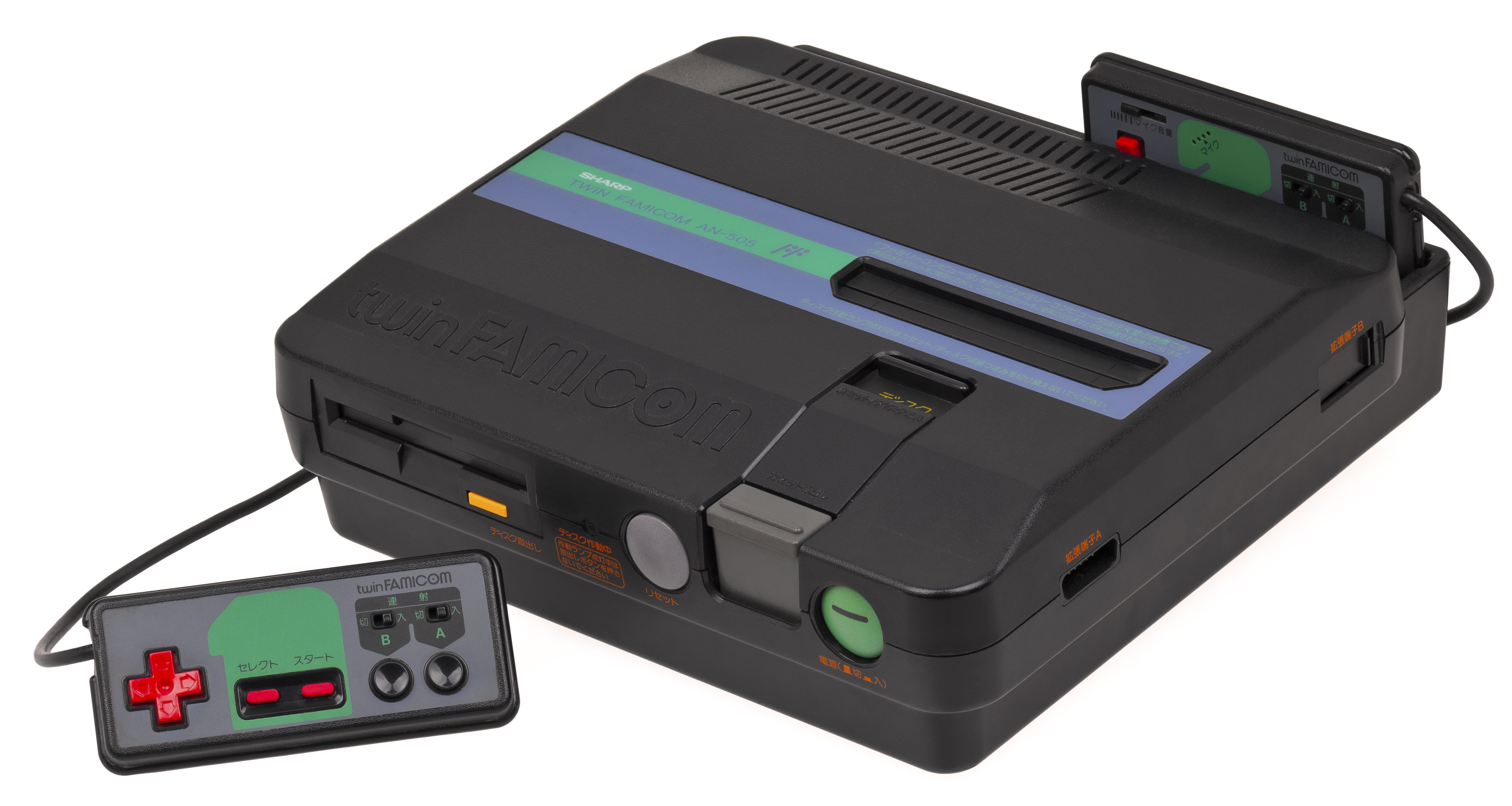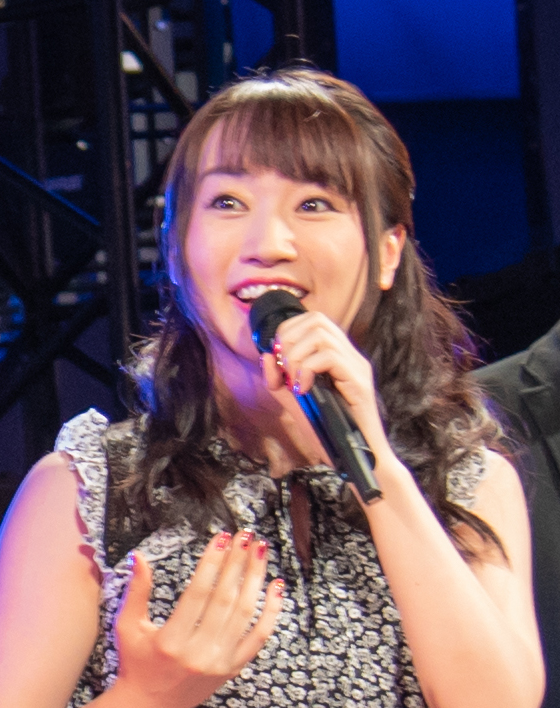|
Risa No Yōsei Densetsu
is a Family Computer Disk System game, released in 1988.https://www.good-day.co.jp/talent/detail.html?info=7 It stars the Japanese idol An is a type of entertainer marketed for image, attractiveness, and personality in Japanese popular culture, Japanese pop culture. Idols are primarily singers with training in other performance skills such as acting, dancing, and modeling. Idol ... Risa Tachibana.http://www.hardcoregaming101.net/risa-no-yousei-densetsu/ Plot Players play as an unnamed fan of Risa's, attending one of her concerts. The two are taken to a fantasy world where the fan must ultimately defeat Delira before they can return home. References External links * 1988 video games Famicom Disk System games Famicom Disk System-only games Japan-exclusive video games Konami games Single-player video games Video games based on real people Video games developed in Japan Video games scored by Kiyohiro Sada {{action-adventure-videogame-stub ... [...More Info...] [...Related Items...] OR: [Wikipedia] [Google] [Baidu] |
Konami
, commonly known as Konami, , is a Japanese multinational entertainment company and video game developer and video game publisher, publisher headquartered in Chūō, Tokyo, Chūō, Tokyo. The company also produces and distributes trading cards, anime, ''tokusatsu'', pachinko machines, slot machines, and List of Japanese arcade cabinets, arcade cabinets. It has casinos around the world, and operates health and physical fitness clubs across Japan. The company originated in 1969 as a jukebox rental and repair business in Toyonaka, Osaka, Japan, by Kagemasa Kōzuki, who remains the company's chairman. Additionally, Konami owns Bemani, known for ''Dance Dance Revolution'' and ''Beatmania'', as well as the assets of former game developer Hudson Soft, known for ''Bomberman'', ''Adventure Island (video game), Adventure Island'', ''Bonk (series), Bonk'', ''Bloody Roar'', and ''Star Soldier''. Konami is the twentieth-largest Lists of video game companies, game company in the world by re ... [...More Info...] [...Related Items...] OR: [Wikipedia] [Google] [Baidu] |
Action-adventure Game
An action-adventure game is a video game hybrid genre that combines core elements from both the action game and adventure game genres. Definition An action adventure game can be defined as a game with a mix of elements from an action game and an adventure game, especially crucial elements like puzzles inspired by older adventure games. Action-adventures require many of the same physical skills as action games, but may also offer a storyline, numerous characters, an inventory system, dialogue, and other features of adventure games. They are typically faster-paced than pure adventure games, because they include both physical and conceptual challenges. Action-adventure games normally include a combination of complex story elements, which are often displayed for players using audio and video. The story is heavily reliant upon the player character's movement, which triggers story events and thus affects the flow of the game. Popular examples of action-adventure games inclu ... [...More Info...] [...Related Items...] OR: [Wikipedia] [Google] [Baidu] |
Single-player
A single-player video game is a video game where input from only one player is expected throughout the gameplay. Video games in general can feature several game modes, including single-player modes designed to be played by a single player in addition to multi-player modes. Most modern console games, PC games and arcade games are designed so that they can be played by a single player; although many of these games have modes that allow two or more players to play (not necessarily simultaneously), very few actually require more than one player for the game to be played. The '' Unreal Tournament'' series is one example of such. History The earliest video games, such as ''Tennis for Two'' (1958), '' Spacewar!'' (1962), and '' Pong'' (1972), were symmetrical games designed to be played by two players. Single-player games gained popularity only after this, with early titles such as '' Speed Race'' (1974) and ''Space Invaders'' (1978). The reason for this, according to Raph Koster, ... [...More Info...] [...Related Items...] OR: [Wikipedia] [Google] [Baidu] |
Famicom Disk System
The commonly shortened to the Famicom Disk System, is a peripheral for Nintendo's Family Computer (Famicom) home video game console, released in Japan on February 21, 1986. The system uses proprietary floppy disks called "Disk Cards" for more affordable data storage and adds a high-fidelity sound channel to enhance audio in compatible Disk System games. To support the Disk System, Nintendo installed "Disk Writer" kiosks in stores across Japan that allowed customers to bring their Disk Cards and have new games rewritten onto them for a small fee, making it a cost-effective alternative to purchasing games on traditional RAM cartridges. Nintendo also offered similar disk rewriting services by mail. The Disk System was designed to enhance features already present in the base Famicom, offering better sound and cheaper, rewritable games. However, it came with drawbacks, including a high initial price for the device along with the storage medium's slower load times and reduced relia ... [...More Info...] [...Related Items...] OR: [Wikipedia] [Google] [Baidu] |
Family Computer Disk System
The commonly shortened to the Famicom Disk System, is a peripheral for Nintendo's Nintendo Entertainment System, Family Computer (Famicom) home video game console, released in Japan on February 21, 1986. The system uses proprietary floppy disks called "Disk Cards" for more affordable data storage and adds a high-fidelity sound channel to enhance audio in compatible Disk System games. To support the Disk System, Nintendo installed "Disk Writer" kiosks in stores across Japan that allowed customers to bring their Disk Cards and have new games rewritten onto them for a small fee, making it a cost-effective alternative to purchasing games on traditional RAM cartridges. Nintendo also offered similar disk rewriting services by mail. The Disk System was designed to enhance features already present in the base Famicom, offering better sound and cheaper, rewritable games. However, it came with drawbacks, including a high initial price for the device along with the storage medium's slowe ... [...More Info...] [...Related Items...] OR: [Wikipedia] [Google] [Baidu] |
Japanese Idol
An is a type of entertainer marketed for image, attractiveness, and personality in Japanese popular culture, Japanese pop culture. Idols are primarily singers with training in other performance skills such as acting, dancing, and modeling. Idols are commercialized through merchandise and endorsements by Talent agent, talent agencies, while maintaining a parasocial relationship with a financially loyal consumer fan base. Japan's idol industry first emerged in the 1960s and became prominent in the 1970s and 1980s due to television. During the 1980s, regarded as the "Golden Age of Idols", idols drew in commercial interest and began appearing in commercials and television dramas. As more niche markets began to appear in the late 2000s and early 2010s, it led to a significant growth in the industry known as the "Idol Warring Period." Today, over 10,000 teenage girls in Japan are idols, with over 3,000 groups active. Japan's idol industry has been used as a model for other pop idol in ... [...More Info...] [...Related Items...] OR: [Wikipedia] [Google] [Baidu] |
Risa Tachibana
(born October 19, 1971) is a former Japanese idol. She is featured in the video game ''Risa no Yōsei Densetsu is a Family Computer Disk System game, released in 1988.https://www.good-day.co.jp/talent/detail.html?info=7 It stars the Japanese idol An is a type of entertainer marketed for image, attractiveness, and personality in Japanese popular cu ...''. Filmography References External links * {{DEFAULTSORT:Tachibana, Risa 1971 births Japanese actresses Japanese idols Japanese women pop singers Living people People from Nishinari, Osaka People from Osaka Singers from Osaka Prefecture Place of birth missing (living people) 21st-century Japanese singers 21st-century Japanese women singers ... [...More Info...] [...Related Items...] OR: [Wikipedia] [Google] [Baidu] |
1988 Video Games
1988 was a crucial year in the early history of the Internet—it was the year of the first well-known computer virus, the Morris worm, 1988 Internet worm. The first permanent intercontinental Internet link was made between the United States (National Science Foundation Network) and Europe (Nordunet) as well as the first Internet-based chat protocol, Internet Relay Chat. The concept of the World Wide Web was first discussed at CERN in 1988. The Soviet Union began its major deconstructing towards a mixed economy at the beginning of 1988 and began its Dissolution of the Soviet Union, gradual dissolution. The Iron Curtain began to disintegrate in 1988 as People's Republic of Hungary, Hungary began allowing freer travel to the Western world. The first extrasolar planet, Gamma Cephei Ab (confirmed in 2003), was detected this year and the World Health Organization began its mission to Eradication of polio, eradicate polio. Global warming also began to emerge as a more significant ... [...More Info...] [...Related Items...] OR: [Wikipedia] [Google] [Baidu] |
Famicom Disk System Games
The Nintendo Entertainment System (NES) is an 8-bit home video game console developed and marketed by Nintendo. It was first released in Japan on 15 July 1983 as the and was later released as the redesigned NES in several test markets in the United States beginning on 18 October 1985, followed by a nationwide launch on 27 September 1986. The NES was distributed in Europe, Australia, and parts of Asia throughout the 1980s under various names. As a Third generation of video game consoles, third-generation console, it mainly competed with Sega's Master System. Nintendo president Hiroshi Yamauchi called for a simple, cheap console that could run arcade games on game cartridge, cartridges. The Famicom was designed by lead architect Masayuki Uemura, with its Game controller, controller design reused from Nintendo's portable Game & Watch hardware. The western model was redesigned by Nintendo of America designers Lance Barr and Don James to resemble a video cassette recorder. Nintendo ... [...More Info...] [...Related Items...] OR: [Wikipedia] [Google] [Baidu] |
Konami Games
The following is a list of games either developed or published by Konami. Arcade 1977–1989 ; 1977 :*''Block Yard'' (released by Leijac) ; 1978 :*''Block Invader'' (released by Leijac) :*''Destroyer'' (released by Leijac) :*''Super Destroyer'' (released by Leijac) :*''Breaker'' (released by Leijac) ; 1979 :*''Car Chase'' ('' Head On'' clone, released by Leijac) :*'' Astro Invader'' (''Kamikaze'' in Japan, released by Leijac (JP) and Stern (NA)) :*''Space King'' (''Space Invaders'' clone, released by Leijac) :*''Space King 2'' ('' Space Invaders Part II'' clone, released by Leijac) :*''Rich Man'' ('' Gee Bee'' clone, released by Leijac) :*''Space Ship'' ('' Star Fire'' clone, released by Leijac) :*''Space War'' (''Intruder'' in North America, ''Space Laser'' in Europe, released by Leijac (JP), Game Plan (NA), and Taito (EU)) ; 1980 :*''Maze'' (released by Leijac) ; 1981 :*''Barian'' (released by Leijac) :*''The End'' (released by Leijac (JP) and Stern (NA)) :*'' Amidar'' (releas ... [...More Info...] [...Related Items...] OR: [Wikipedia] [Google] [Baidu] |





